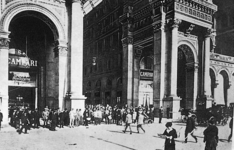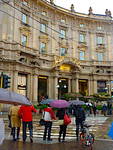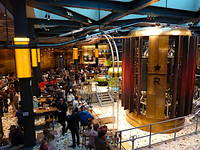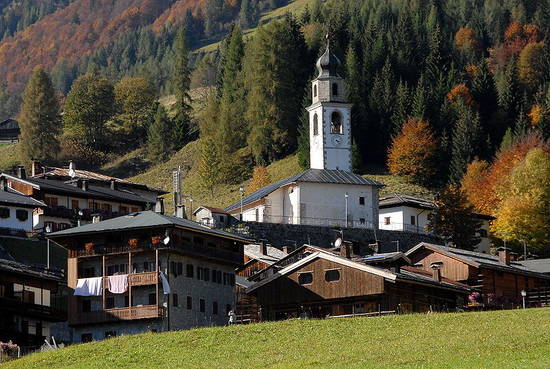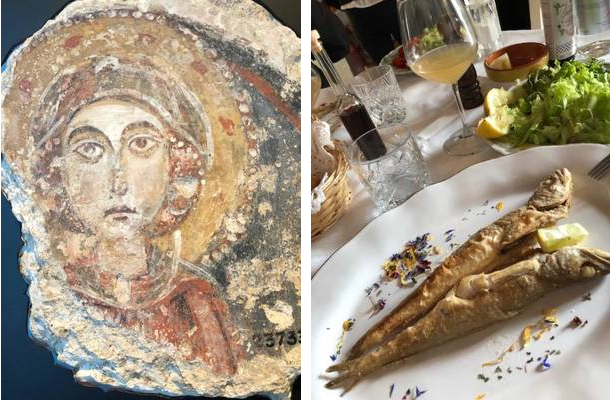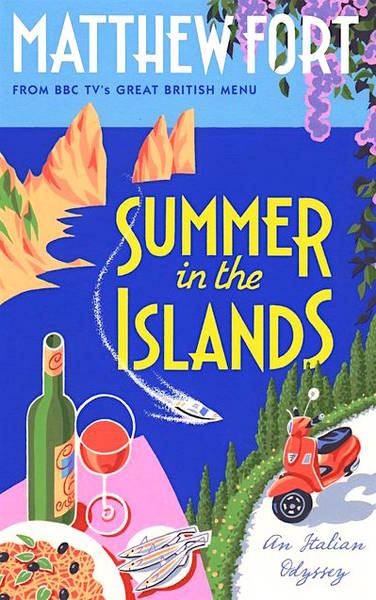Monday in Milan was forecast to be the “apex” of Northern Italy’s recent stormy weather. It did not disappoint, with poor light, driving rain and strong winds. Not an ideal morning to find oneself exposed to the elements armed only with a €3 folding umbrella, much of the time blown inside out, in the 45-minute line zigzagging across the piazza to enter the Duomo. But such are the exigencies of Blue Guides research, and the deadline for the important new Blue Guide Lombardy–finally completing the enormous task of updating Blue Guide Northern Italy region by region–looms.
After the calm inside the Duomo had helped revive the soggy and flagging spirits, something stronger was required. As you leave the cathedral from its west end, you see a welcoming sign–CAMPARI–across the piazza on your right. It marks the famous Camparino in Galleria bar, first opened by Davide Campari in 1915, a shrine to the sticky, herbally-bitter red stuff beloved of cocktail aficionados the world over.
On arrival, we are ignored by the staff. Hopefully entering the pretty seated area to the right, we are told by the waitress that the sole remaining empty table is only to be sat at by parties of four–we constitute an inadequate two. Back in the airy and elegant bar area, which doubles as a holding pen, a brisk, waistcoated gentleman, who seems to be in charge and holds sway from behind a high till, promises to help but then disappears. Fortunately, a smart barman comes to our aid with two Campari and sodas (he is later rebuked for this by his colleague at the till, as we should have paid first). The drinks are excellent: ice cold Campari stored at sub-zero temperatures is unctuously poured into narrow tall chilled glasses. Then soda water, also ice cold and very fizzy, is piped in at sufficient pressure to create a foam on top, with proportions of around 2 measures of Campari to 3 of soda. No ice is added to dilute and detract from the pleasure. Olives and so on are liberally available from the bar. Delicious and a reasonable €11 for two.
But could it have been better? In the spirit of intrepid Blue Guides enquiry we head a hundred yards up the Via dei Mercanti to the brand new Starbucks–the first in Italy, dubbed (I presume by the company) “the most beautiful Starbucks in the world” and designated a “Roastery”. It has been inserted into the attractive Palazzo Delle Poste building on Piazza Cordusio. A Campari and soda? “Of course”, the smiling greeter who smilingly greets us at the door replies, directing us upstairs past enormous and impressive pseudo-industrial machinery, maybe connected to coffee roasting (or is it mail sorting–this was a post office?) to the bar in the gallery at the back. We perch on stools and a helpful mixologist promptly takes our order. Not much happens for a bit. When the drinks arrive they are “on the rocks”. And the “rocks” are not just a couple of ice cubes in the bottom of a tumbler, the drinks have been poured over large glasses brim-full of ice. This time €20 for two, plus green olives and cheese. The design of the internal space is bold, the resulting effect reminiscent of the more high end bits of airport retail.
The verdict: well dear reader, while wishing Starbucks well with their vision and congratulating them on their service and the buzz of their new venue, you will not be surprised that the Blue Guides goes for Camparino, for its atmosphere, decor, history, sense of place and quality of drinks every time. Even the staff turned out friendly eventually, and while we do not anticipate a global roll-out with Camparinos in every shopping mall and main square on the planet any time soon, well, maybe it’s better that way …
A.T.







